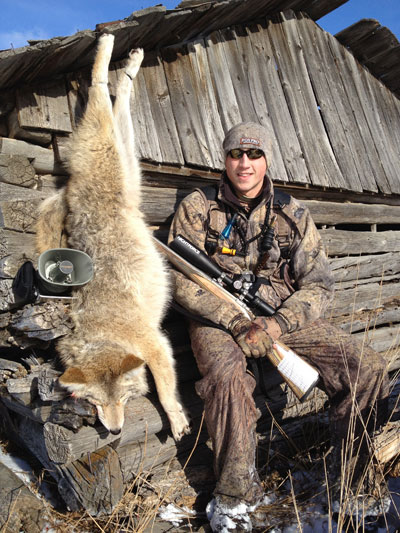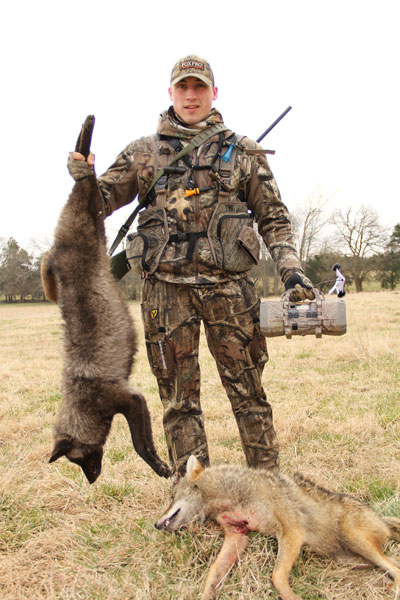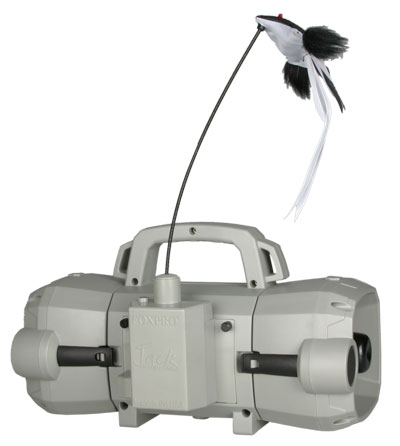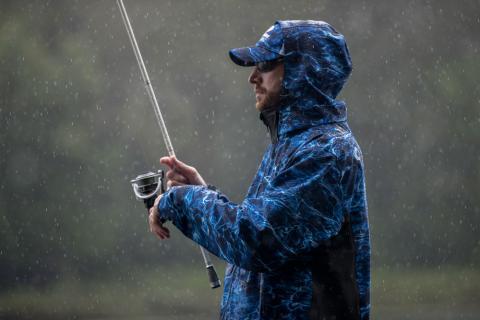Heath Wood
 Abner Druckenmiller of FoxPro spends several days and nights a year traveling across the country in pursuit of predators. Throughout the last several years, Druckenmiller has become one of the nation’s leading predator hunters. In the past, I have asked questions to Abner such as how to choose the right sounds when calling coyotes. This time, I sat down with him to learn the answers to some of the most asked questions among predator hunters.
Abner Druckenmiller of FoxPro spends several days and nights a year traveling across the country in pursuit of predators. Throughout the last several years, Druckenmiller has become one of the nation’s leading predator hunters. In the past, I have asked questions to Abner such as how to choose the right sounds when calling coyotes. This time, I sat down with him to learn the answers to some of the most asked questions among predator hunters.
Years of being a hardcore predator hunter has enabled me the chance to visit with several predator hunters across the country. There are moments when a new hunter will ask me how to get started predator hunting and if I have any tips or tricks for them as they begin their predator hunting journey. Other times, I find myself asking the questions in order to better myself as a hunter. Whatever the case may be, there are a few questions that seem to always get asked by beginning predator hunters who are seeking further education on the topic.
How Long Should I Set On Each Stand?
It’s one of the most asked questions among hunters, but it all depends on the species of predator one is hunting. I’m fortunate enough to be able to hunt across the country for coyotes, bobcats and foxes. Most of the time this question is asked by coyote hunters. When specifically talking about coyotes, I usually sit for approximately 16 minutes on each stand. And the reason being is typically a coyote will respond within that 16-minute time zone. However, for me it is more of a numbers game. The more stands one can make is that many more opportunities to call a coyote in. Some guys will sit for an hour or more on a stand and may have a coyote come in around that one-hour mark. By sitting around 16 minutes per stand, I can make 3 to 4 stands and possibly take 3 to 4 coyotes while covering a wider area in the same amount of time as that hunter who has made one stand and only taken one coyote. It is more about covering a lot of ground.
How Much Land Do You Hunt?
This is my number one rule in predator hunting: have access to a lot of property to go call coyotes. There are different pockets across the country that have a higher density of coyotes. For example, in Pennsylvania where I live, we have more foxes than we do coyotes, so it takes getting access to a lot of property to hunt. To do this, show respect to landowners. Go introduce yourself in a polite manner and ask if it’s ok to call predators on their land. If one only has one small farm to hunt, after making a 15 minute stand the hunt is pretty much over. It takes a lot of land to be able to make multiple stands. Remember, to respect landowners and let them know when you will be hunting and where you will be hunting. This is how you will maintain a long relationship to be able to hunt for years to come.
 How Often Can A Property Be Hunted?
How Often Can A Property Be Hunted?
This really comes down to predators being optimistic. A coyote will respond quickly to a call because they want to be the first one to the food. They want to beat other coyotes, hawks, eagles, coons, bobcats, etc. Therefore, when I call an area and I have 3 coyotes respond to my call and I am able to harvest 1 of the 3, I know there are still 2 coyotes in that area. If I know there are coyotes in the area, I am for sure coming back.
As to how often, this depends on weather, like a front moving in. I have hunted the same property at night and returned the next night and have been successful. Sometimes it may be 3 days in between. I obviously don’t want to hunt them every day, because I like to have a lot of land to hunt. If one knows there is predators in the area, keep hunting it. Some hunters don’t want to admit it; however, predators are somewhat dumb. God never created animals with the ability to reason. For example, a coyote doesn’t hear a jack rabbit sound in Pennsylvania and think to itself, “that’s not a jack rabbit, we don’t have jack rabbits in Pennsylvania.” They don’t know that. But it is amazing how God created animals to have instinctive knowledge of pressure. For example, if a whitetail hunter busts a 150-inch buck out of his bedding area one day, then returns the second day and busts him again then busts him again on the third day, he probably isn’t going to come back to that area. The same is when hunting coyotes and how often to hunt the same land. Therefore, I give it some time in between stands for less pressure.
How Far Does One Travel In Between Stands?
It all depends on the terrain. If I am hunting out West, where it is open country and sound can travel farther, I will hunt a mile and half to two miles in between each stand. However, when hunting in the eastern part of United States I hunt gnarly ridges, valleys, fields and fence rows. At this time, I will only travel a small distance. I have even called on opposite ends of big fields, because of the way the land laid, the sound traveled better on one end and coyotes where able to hear me. How far to travel in between stands all depends on how far one thinks a coyote can hear the sounds.
What Is The Best Time Of Day Or Night To Hunt?
 It all depends on the time of the year. One great way to tell when the best time of day or night to hunt is by watching other predators such as hawks or even house cats. If one is seeing a lot of sign of other predators out feeding, then it is probably a great time to be hunting. Another great time to hunt is when a weather front is first coming in, as animals seem to move more during this time. A lot of hunters talk about having the right weather to hunt. However, I have success on some of the worst days and/or nights for weather. Some of the best success can be when weather is changing.
It all depends on the time of the year. One great way to tell when the best time of day or night to hunt is by watching other predators such as hawks or even house cats. If one is seeing a lot of sign of other predators out feeding, then it is probably a great time to be hunting. Another great time to hunt is when a weather front is first coming in, as animals seem to move more during this time. A lot of hunters talk about having the right weather to hunt. However, I have success on some of the worst days and/or nights for weather. Some of the best success can be when weather is changing.
Do Decoys Work And How Often Should You Use Them?
There a couple different ways to utilize decoys when calling predators. When I am hand calling, this keeps the attention off of me. With that being said, I always have the Fox Jack 3 decoy on my Shockwave electronic caller. I have had coyotes spook at the decoys, and I have had some completely run it over. It all depends on what kind of mood the coyote is in when responding to the call. One of my favorite ways to utilize a decoy on a caller is by leaving it off, unless the coyote hangs up at a distance. The most likely reason he is not coming any closer is because he doesn’t see anything. This is when I will use my remote to turn on the decoy, long enough to catch the attention and give the assurance to come the rest of the way in. A hunter can use actual coyote decoys during the breeding season. Again, it all depends on the mood of the coyote that is responding. I have had coyotes come in and I have had them spook because they have been whipped before. I suggest trying them and see what works. If it is working, keep using it. As for how often, I always have a decoy with me; I may not use it, but I carry it with me on every hunt.

 How Often Can A Property Be Hunted?
How Often Can A Property Be Hunted?




























